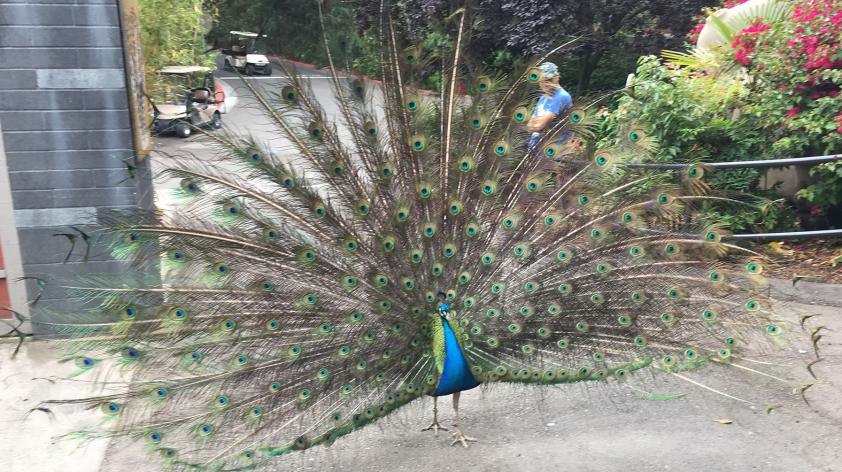
How fast can we respond? Really fast...
I got the call from Dr. Nadine Lamberski last Saturday: “We can’t go to Africa, we’re needed here.” It was disappointing but not surprising – our top priority is the health and well-being of the animals in our care, so when we got the news that the Virulent Newcastle Disease (VND) outbreak in backyard chickens in Los Angeles had spread to San Bernardino, we knew our long-anticipated trip to Zimbabwe and Kenya was off. We were needed here.
The disease was spreading, and it could be heading our way.
We spent most of the weekend on the phone. Key staff needed to know we were immediately ramping up our biosecurity practices to make sure this disease didn’t get into our bird collection. And keeping a highly contagious avian disease out of our largely open-air facilities with high visitor traffic is not an easy task. We needed our staff to respond rapidly, and respond they did.
Our operations staff had to find out the routes of all delivery vehicles and trash trucks entering our facilities to make sure none of them stopped at poultry operations before coming here; the security teams had to set up vehicle disinfection stations at service entrances; our nutrition team had to revisit the sourcing of all our animal feeds and diet items; our animal care teams had to re-evaluate work flows and set up foot baths and hand disinfection stations for staff at each bird area; we had to review protocols for isolating our birds and covering open water features that attract wild birds in case the threat level increased; and we had to make sure we could do all this without having a major impact on the thousands of guests visiting our facilities each day.
The only thing that made our task simpler was that VND only affects birds – we don’t have to worry about the health of our guests, staff, or the many other species of animals in our care.
We also have the advantage of having been through this before. In 2003, VND spread from backyard poultry in Los Angeles to commercial poultry operations throughout Southern California, and eventually to egg ranches in San Diego County. We learned then what it takes to rapidly mobilize our staff and roll out stringent biosecurity practices for our very large and complex facilities.
Since then, we have been working continuously with colleagues at the US Department of Agriculture, the California Department of Food and Agriculture, and the Association of Zoos and Aquariums to develop all-hazards emergency response plans that would enable us to protect our irreplaceable animal collections regardless of the nature of the threat, whether it’s disease, fires, floods, earthquakes, or other natural disasters. Most of the time we don’t face any immediate threat from VND because it doesn’t occur in the United States; the closest it regularly occurs is Mexico. But that’s close enough that we always have to be on our toes.
As scary as it is to have to put these emergency response-plans into play, it’s a wonderful thing to know that we have such dedicated staff that they won’t hesitate to drop everything they’re doing and devote their entire weekend, and the coming work weeks, to protecting our animals. We’re a large conservation organization, so this could have been like trying to make an aircraft carrier do a sharp turn, but it wasn’t. We’ve been preparing for this for a long time, so it was more like launching a squadron of fighter jets from an aircraft carrier – everyone was ready to scramble.
It’s disappointing to not be doing the important conservation work in Africa we had been planning for so many months, but that can be rescheduled. Right now we’re happy knowing that we’re all doing everything we can to protect the animals in our care. Hats off to all our amazing staff at the San Diego Zoo and Safari Park!













